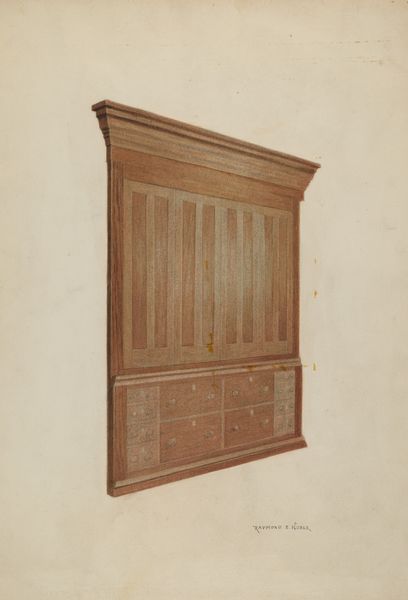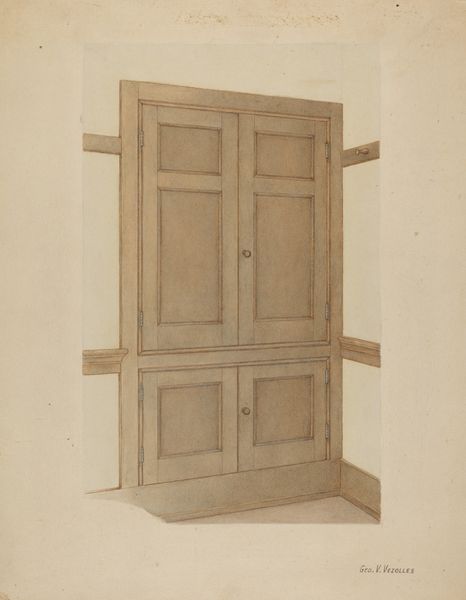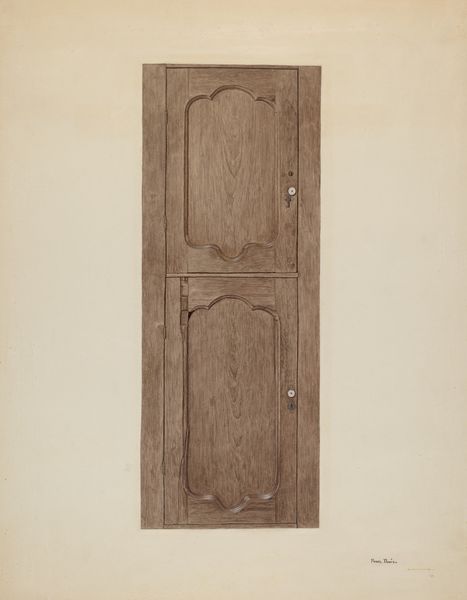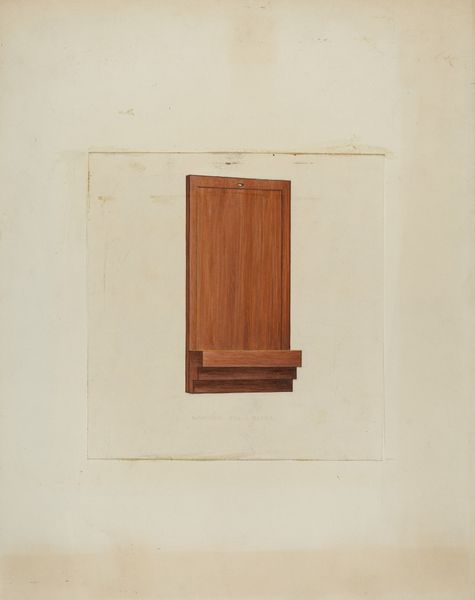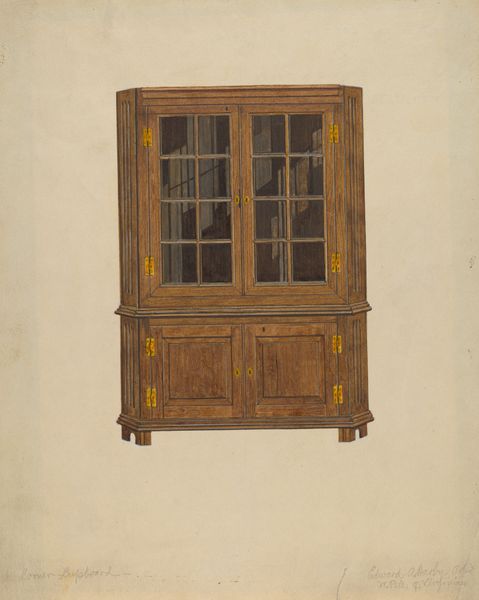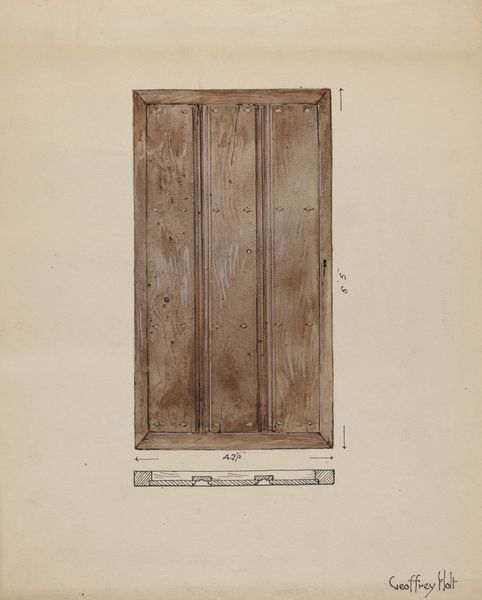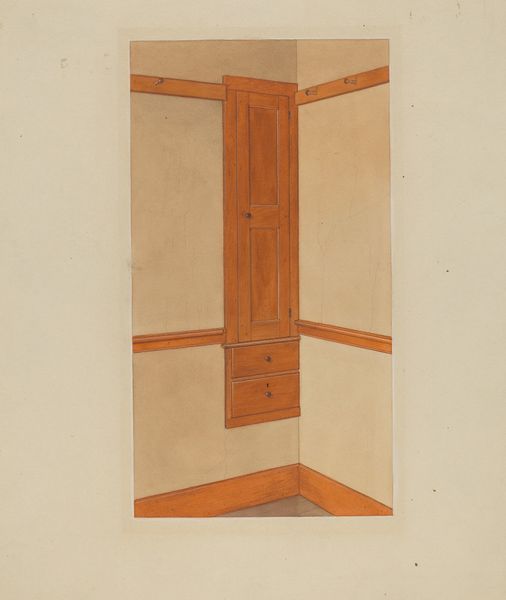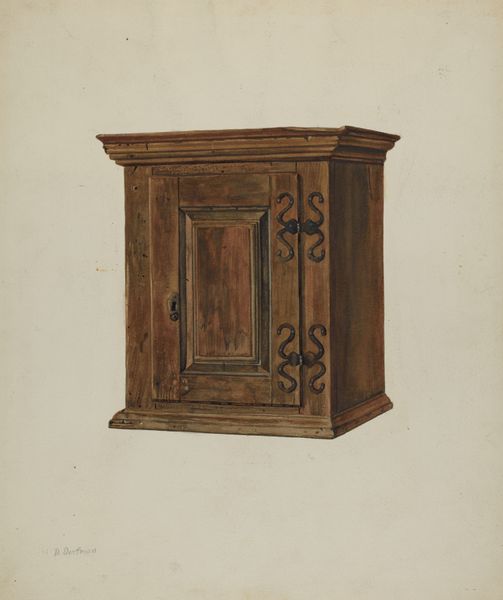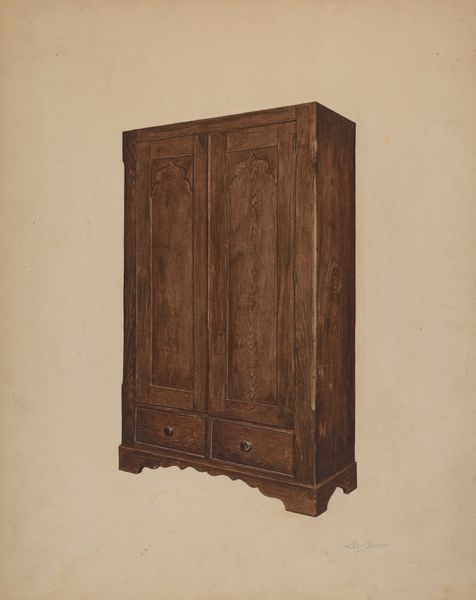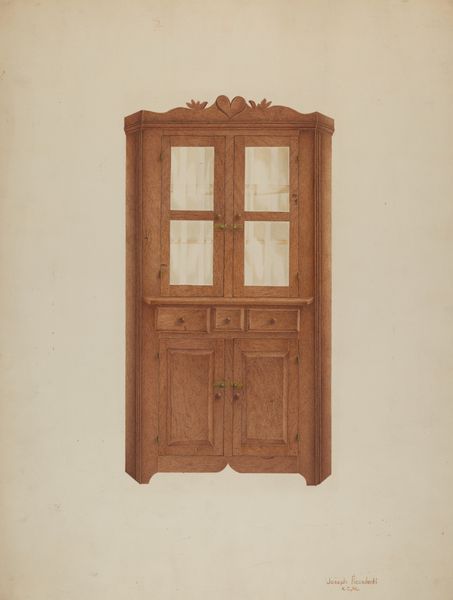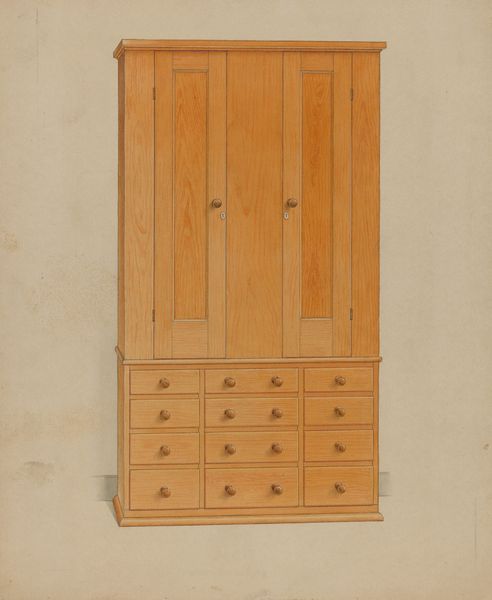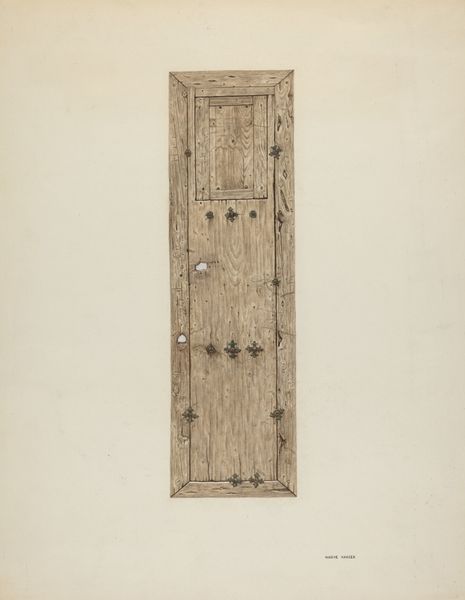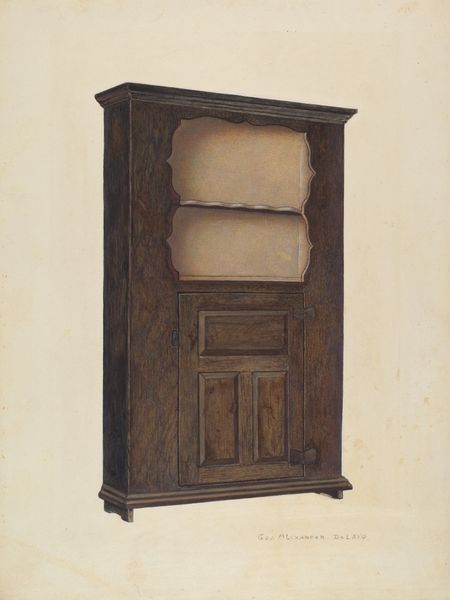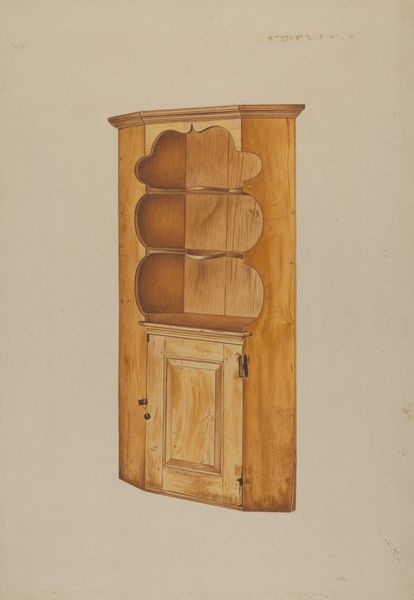
drawing, pencil, wood
#
drawing
#
folk-art
#
pencil
#
wood
#
watercolor
Dimensions: overall: 30.6 x 25 cm (12 1/16 x 9 13/16 in.) Original IAD Object: 25 3/4" high; 27" wide
Copyright: National Gallery of Art: CC0 1.0
Curator: Well, that’s quite a humble, earthy presence. The Shaker Medicine Chest; rendered circa 1937 using pencil, watercolor, and wood; projects a sense of rustic utilitarianism. The design work belongs to William Paul Childers. What are your initial thoughts? Editor: There is an aura of contained silence about it. A stillness within the solid geometry of the chest that almost feels medicinal. The muted colors, that dominant wood grain, it’s very soothing to the eye. Curator: Interesting, because for the Shakers, the very design was imbued with meaning. Simplicity and utility weren't merely aesthetic choices, they were reflections of their spiritual values. Clean lines, lack of ornamentation… it speaks volumes about their commitment to a life devoid of unnecessary frills. Editor: Precisely. The chest, in this representation, becomes a vessel of those ideals. Medicine isn't just about physical healing for the Shakers, is it? It's about a holistic well-being, mind, body, and spirit. This object becomes an earthly symbol of their beliefs, a quiet statement about self-sufficiency and inner harmony. I am very drawn to its gentle lines. Curator: And remember, within the Shaker community, even the placement of objects had significance. The medicine chest, likely hung on a wall, becomes part of an environment intended to foster those values. The public display of simple utility to constantly serve as reminder. It’s a constant reminder, a physical manifestation of their beliefs impacting daily life. It's brilliant, how this design transcends mere function. Editor: The symbolic element connects it to its original makers, of course, and that human element, the connection, is quite moving here, across the years. This unassuming chest contains not only remedies, but an entire cultural ethos. Curator: Indeed. It shows us how a seemingly simple object can hold profound symbolic weight. I found this object an interesting insight into the cultural history of spiritual movements within 20th century America. Editor: Agreed; and as always it seems we have found much in simplicity, a core idea which never gets old.
Comments
No comments
Be the first to comment and join the conversation on the ultimate creative platform.
